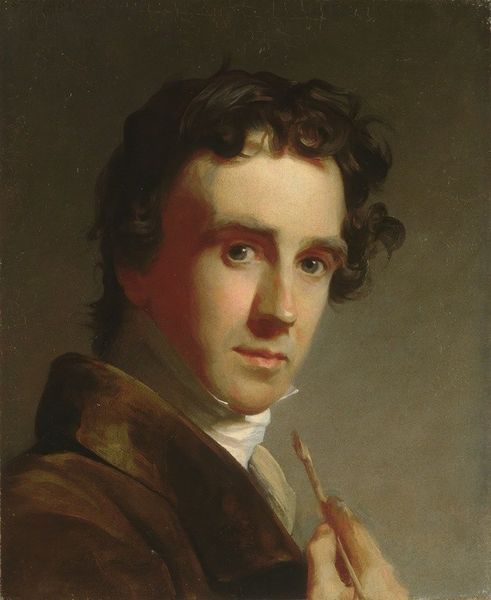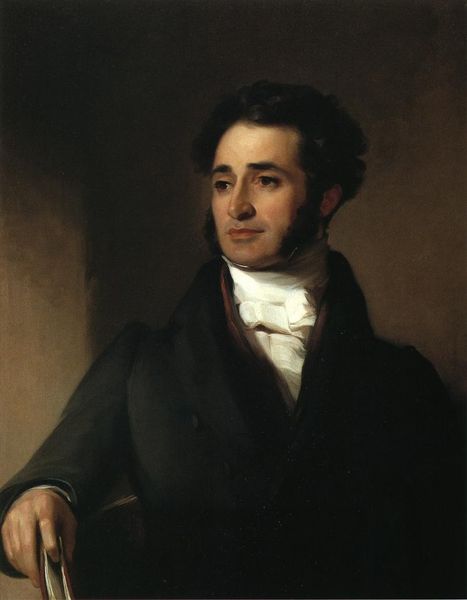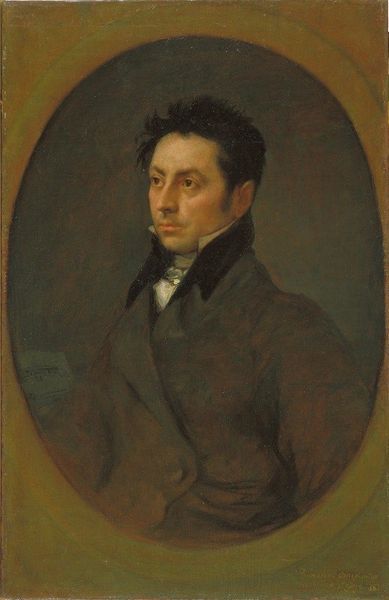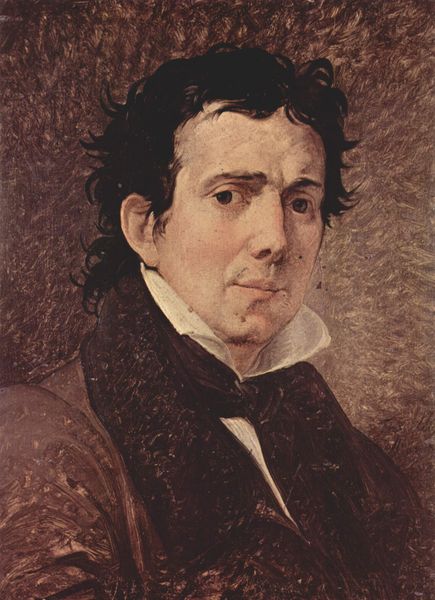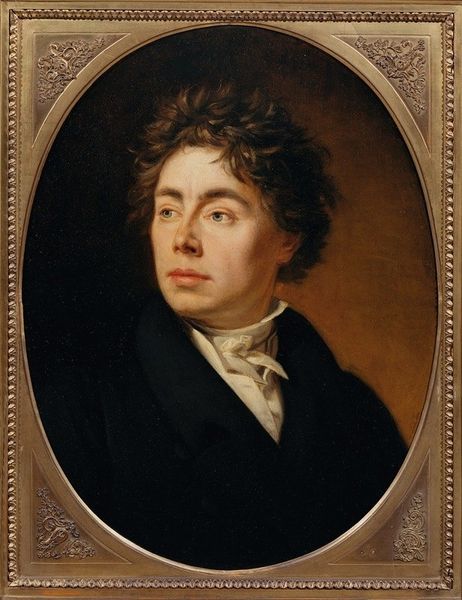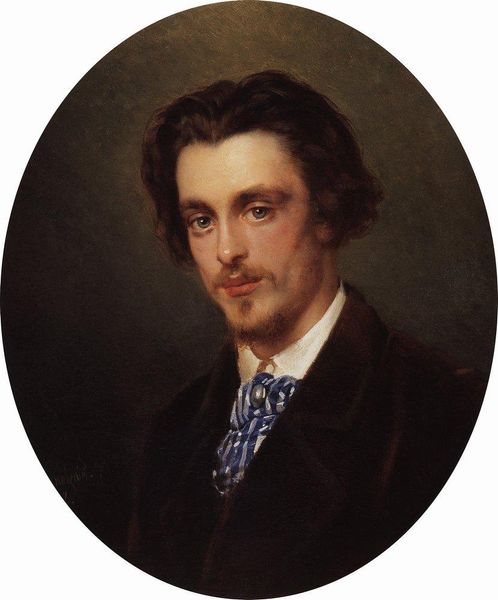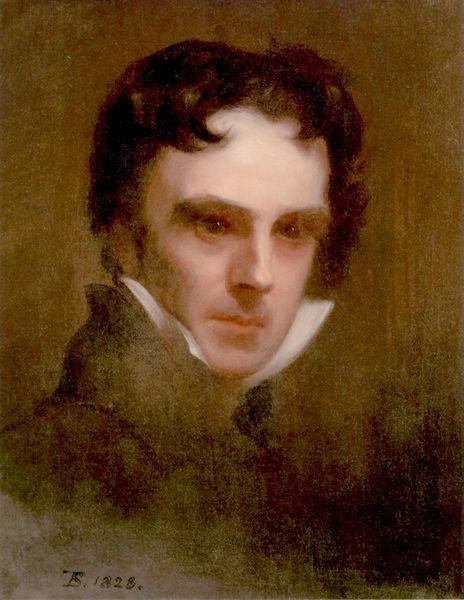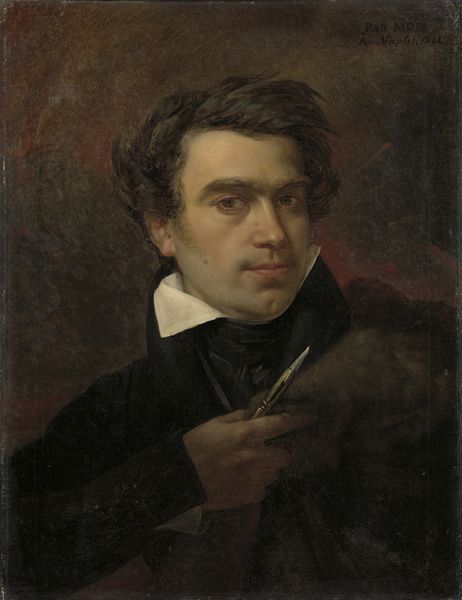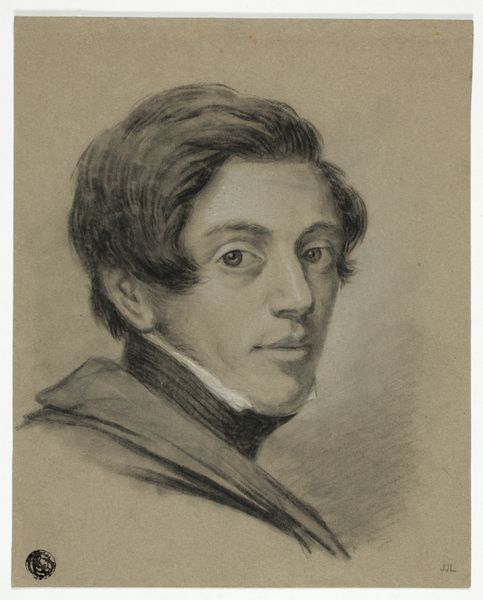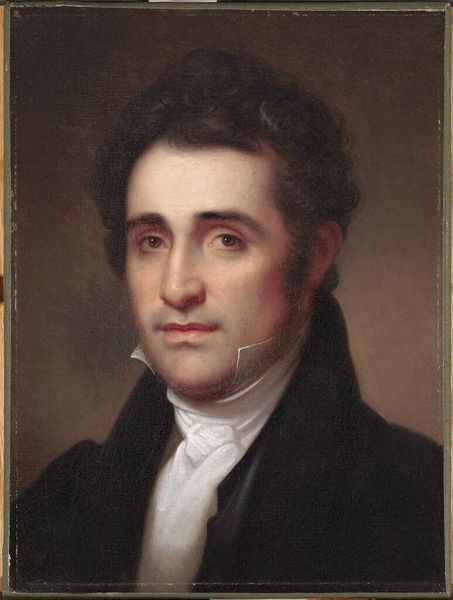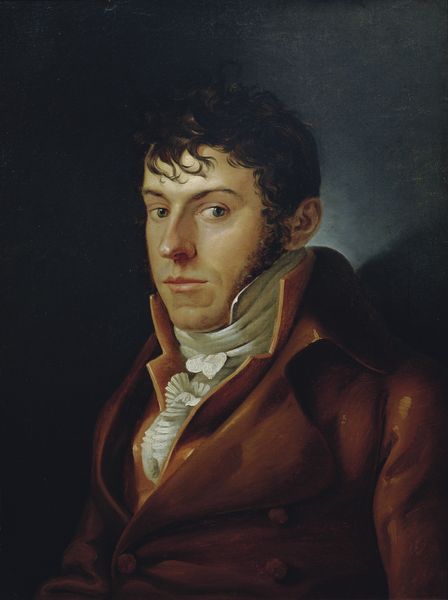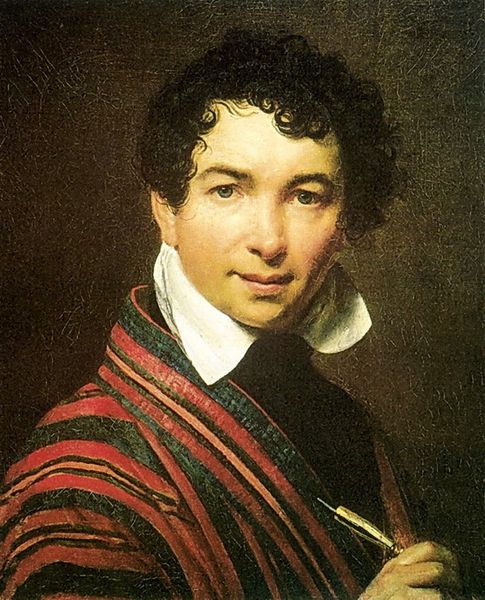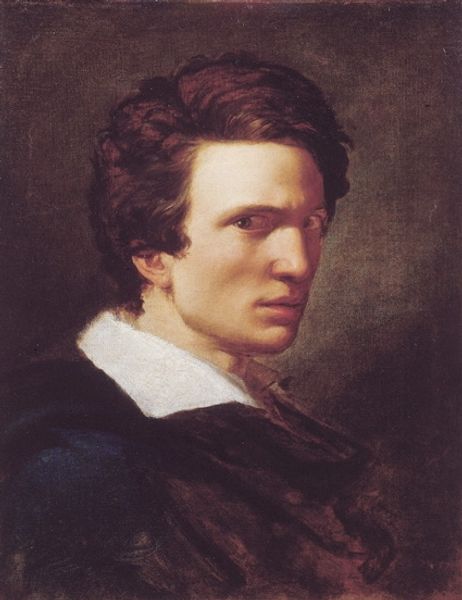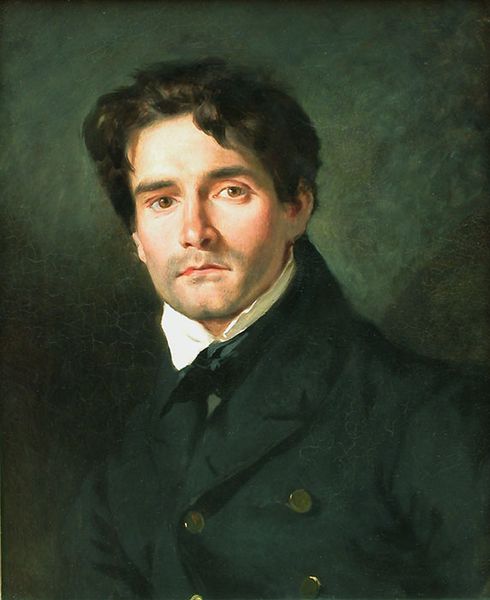
painting, oil-paint
#
portrait
#
neoclacissism
#
painting
#
oil-paint
#
classicism
#
history-painting
#
academic-art
#
realism
Dimensions: 41.5 x 33 cm
Copyright: Public domain
Editor: This is a portrait of Jean-Pierre Cortot, rendered in oil on canvas in 1815 by Jean-Auguste-Dominique Ingres. I’m struck by how…contemporary it feels. There’s a certain casualness in his gaze. What’s your interpretation of this piece? Curator: Beyond the immediate visual appeal, consider the era. This Neoclassical portrait was painted shortly after the French Revolution, a time when the artistic establishment grappled with evolving ideals of representation and social structure. Note the subject's gaze; does it convey republican virtue, or is there a hint of Romantic individualism emerging? Editor: I see what you mean. His expression isn't heroic in a grand, history-painting kind of way. There’s vulnerability. Curator: Precisely! And look at the relative plainness of the sitter's clothing. Ingres’ focus seems drawn towards the contours of the face and the almost sculpted quality of the curls. How does this reflect the evolving role of artists in society? Cortot himself was a sculptor – how might this painting function as a commentary on the relationship between different art forms? Editor: So, it’s less about the subject’s social standing, and more about celebrating his artistic identity? Highlighting him as part of a broader cultural shift? Curator: Absolutely. Ingres subtly positions Cortot within a changing social landscape where artists begin to occupy a new kind of space – their individual talent and vision contributing significantly to the burgeoning idea of “culture” itself. Think about who was gaining power during the period of Neoclassicism: how do portraits such as these reinforce or subtly undermine the societal hierarchy? Editor: That makes me think differently about the painting. Thank you! It highlights the artist's changing social role. Curator: My pleasure! Hopefully, this reveals that even seemingly straightforward portraits can be sites of rich and layered sociopolitical reflection.
Comments
No comments
Be the first to comment and join the conversation on the ultimate creative platform.
